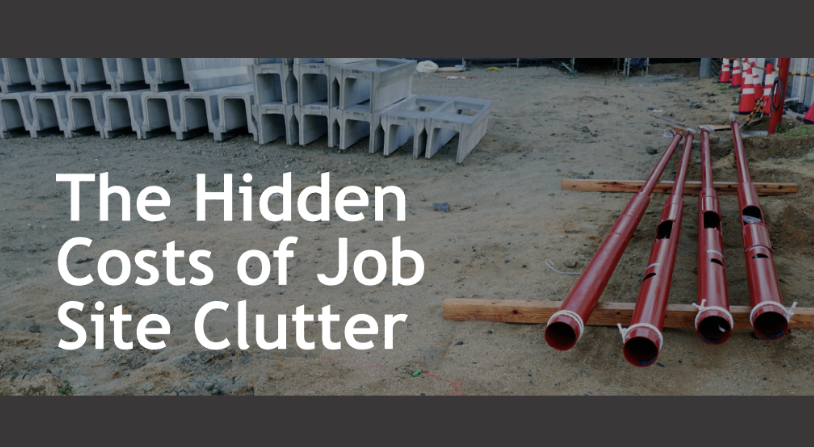Clearing the Chaos: Why Job Site Organization Drives Construction Success

Construction sites are busy, high-pressure environments where dozens of moving parts must work in sync. Between managing schedules, coordinating trades, and balancing budgets, site organization can easily slip down the priority list. Yet when clutter begins to pile up—whether it’s scattered materials, misplaced tools, or obstructed walkways—it doesn’t just affect appearance. It directly impacts productivity, safety, and the bottom line.
A disorganized site slows progress, invites accidents, and inflates costs. What may seem like minor clutter often creates ripple effects that disrupt the entire workflow, ultimately making it harder to deliver projects on time and within budget.
How Disorganization Slows Progress
Time is one of the most valuable resources in construction, and a messy job site quietly drains it away. When workers spend extra minutes searching for tools or clearing paths just to access work areas, productivity suffers. These small inefficiencies, repeated across crews and shifts, can translate into significant delays.
Poor layout and storage practices also create bottlenecks. When pathways are blocked or materials are stacked in the wrong areas, it can interrupt the sequence of scheduled work and force teams to wait or reconfigure tasks. These disruptions often trigger a domino effect, impacting other trades and extending project timelines well beyond expectations.
Safety Risks Rise with Clutter
Beyond lost productivity, clutter poses serious hazards. Cables, debris, and loose materials create tripping risks, while crowded workspaces make it harder to maneuver heavy machinery or equipment safely. According to industry data, slips, trips, and falls remain among the top causes of construction injuries—many of which stem from poor housekeeping.
The consequences go beyond immediate harm. Workplace accidents can result in project stoppages, costly insurance claims, and regulatory penalties. Keeping job sites organized isn’t just about efficiency—it’s a vital part of maintaining a safe and compliant operation.
Waste and Cost Overruns Add Up
When tools and materials aren’t stored correctly, they’re more likely to be damaged or lost. Exposure to weather, accidental impacts, or improper stacking can all lead to unnecessary replacement costs. Worse, when inventory isn’t tracked properly, teams may reorder materials they already have on-site—further wasting time and money.
Establishing clear storage and tracking systems prevents these issues. Construction storage for contractors—such as weather-resistant outdoor containers and labeled tool zones—helps teams protect resources and keep high-traffic areas clear.
Practical Steps Toward an Organized Site
Improving organization doesn’t require large-scale changes. Small, consistent actions can transform efficiency:
• Designate zones for tools, materials, waste, and equipment to reduce confusion and prevent overlap.
• Implement end-of-day cleanup routines to keep clutter from accumulating.
• Use mobile storage units or containers for less frequently used items, freeing up valuable workspace.
• Plan site layout strategically so that workflows are logical, materials are close to where they’re needed, and crews aren’t tripping over each other.
• Promote accountability by making housekeeping part of the safety culture and daily expectations.
The Payoff: Efficiency, Safety, and Profitability
An organized construction site isn’t just cleaner—it’s safer, faster, and more cost-effective. By addressing clutter before it becomes chaos, contractors can reduce downtime, prevent accidents, and build a stronger foundation for success.
In an industry where every minute matters, organization is more than good housekeeping—it’s smart business. A clean, structured site reflects professionalism, supports productivity, and helps ensure that every project moves forward smoothly and safely.
Read Also:









